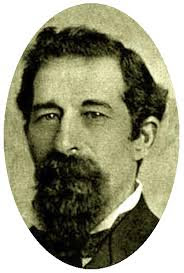In 1825 President
James Monroe, after looking at reports from his top advisors, created, what was
called, the Indian Frontier between the Mississippi River and the Rocky
Mountains. It was believed at the time that this area was unfit for anything
other than the native tribes and the wandering herds of bison.
The frontier designation came shortly after the
government got out of the trade business with Americas western frontier. For decades the United States Government
had licensed traders in the west, allowing them to build trading posts/forts, referred
to by the government as factories. When the government gave up the selling of
trade licenses for specific monopolies of
trade territories, it cost the government
some money, but they were no longer considered a
significant economic boon to the country.

The Bureau of Indian
Affairs, formed in March of 1824, by Secretary of War, John C. Calhoun, as part
of his department and without asking for, or getting authorization from Congress.
Calhoun recognizing that trappers and traders were going to operate in the West without the benefit of traders licensed by
the government, but still wanted some
type of organization in the western wilderness. He appointed, also with anyone’s
approval, Thomas L. McKenney as the first Superintendent of Indian Affairs. McKenney called himself, the head of
the Indian Office. He was removed by President Jackson in 1830 because of his
belief that the Indian was morally and intellectual the equal of white’s.
 |
| President Jackson |
In 1834, the Indian
Intercourse Act was passed, forbidding whites
from going into Indian lands without permission from the commissioner of Indian
affairs. That date is important because there were already hundreds if not
thousands of company trappers, free trappers, traders, hunters, and wanders, already in the forbidden, to whites, Indian
lands.
From this came the
new Army of the West. It took a few years but by 1849, the Bureau realized the
need for a presence in Wyoming, purchased Fort John, and changed it to a
military post, renaming it Fort Laramie.
 |
| Fort Laramie's Old Bedlam |
From that point, troubles persisted. People moved west
without permission, young military commanders wanted to fight Indians not make
peace and the tribes grew more and more aggressive as the bison on the plains
were shot up.
During his brief, 16 months, Presidency, Zachary Taylor, moved
Indian Affairs to the U. S. Department of the Interior, believing it was a
better fit for the unsettled lands.
Some have argued that
the BIA created as many problems as it solved. Five years late, 1854, the Grattan
Massacre just east of Fort Laramie began histories Plains Indian Wars period.







